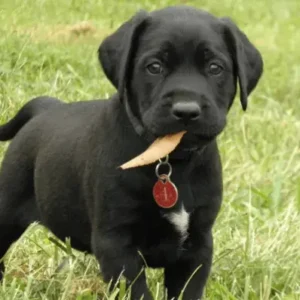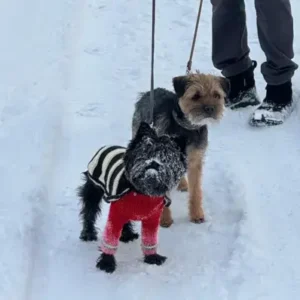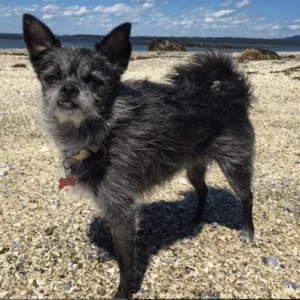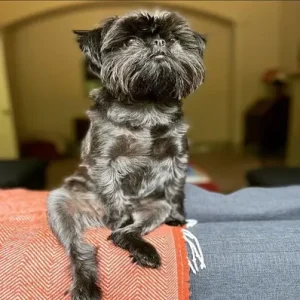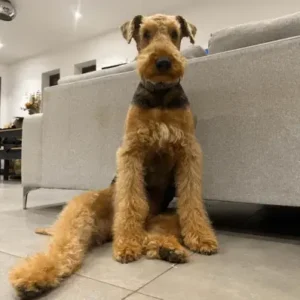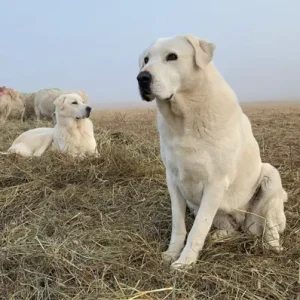All About Afghan Hound Dog
Read all the basic information you need to know about the regal Afghan Hound:
Afghan Hound Origin
The Afghan Hound is a dog breed that has been around for centuries. Some believe the breed originated in Egypt, while others believe it originated in Afghanistan. The most likely origin of the Afghan Hound is Afghanistan, as their name suggests.
These dogs were bred by tribe members who used them for hunting games such as deer, rabbits, and even wolves. They were also used as watchdogs and guard dogs.
The Afghan Hound’s speed, reaching up to 40 mph, made this purebred an excellent choice for hunting. It was particularly popular in Asia and later among English nobility. As a member of the Hound Group, specifically the sighthound family, the Afghan Hound is related to other swift breeds like the Greyhound and Whippet.
- History Of The Afghan Hound
These regal dogs were once royal pets but are now popular family pets. They quickly became popular among the European nobility, who prized them for their beauty and hunting abilities. The Afghan Hound was brought to Europe by British soldiers who had served in Afghanistan during the late 19th Century.
Now, they are kept as house pets and show dogs. They have been competing in the show ring since the early 1900s and are popular competitors today. They were even featured in the first-ever American Kennel Club Dog Show in 1877.
Here’s a video featuring Afghan Hound competing in the Hound Group at the 2023 National Dog Show:
The Afghan Hound has been registered with the American Kennel Club for lure coursing since 1926 and is currently ranked as the 97th most popular breed in the United States.
Afghan Hound Personality
One of the first things you’ll notice about Afghan Hounds is that they’re independent thinkers.
They’re not the type of dog that will mindlessly obey your every command; rather, they’ll only do what they want to do when they want to. This can be frustrating at times, but it’s also one of the things that makes them so special.
If you’re looking for a dog that will always do exactly what you say, this breed is probably not right for you.
Afghan Hound Temperament
Despite their independent streak, the Afghan Hound is also quite lively. They love to run and play, and they’re always up for a game of fetch. However, they also tend to be laid back and enjoy a cozy evening inside with families.
Contrary to what some people believe, they are very affectionate dogs. They might not show it the way other breeds do, i.e., by constantly demanding attention or following you around the house. But they form strong bonds with their owners. If you give them the love and attention they crave, they’ll reward you tenfold with their affection.
Despite this tendency, they are not the best at socializing with strangers.
Afghan Hound Physical Appearance
The Afghan Hound is one of the world’s most ancient and unique dog breeds.
Standing out among all other breeds, they are characterized by their tall, slender body, long-haired silky coat, and distinctive head with large eyes and ears.
But there’s more to this regal breed than meets the eye. Despite their stature, these dogs are incredibly agile and athletic. They are known for their powerful hind legs, which enable them to leap great distances.
Another distinctive feature is their head shape. The head is wide with large eyes that are set far apart. The ears are long and droopy, which gives the dog an aristocratic look.
Although long, silky coats are the norm, some of them may possess a more unique short hair variant, adding a distinctive touch to this breed.
The muzzle is long and pointed, which allows the dog to have better airflow when running at high speeds.
Although no other breed compares to the elegance of these dogs , Borzois are also known for their beautiful coat. Both of these share some similarities and differences. Here’s a quick look at Borzoi vs. Afghan Hound:
|
Feature |
Borzoi |
Afghan Hound |
|
Origin |
Russia |
Afghanistan |
|
Size |
Larger, more robust |
Slender and tall |
|
Coat |
Long, silky, and dense |
Long, silky, flowing |
|
Color |
Various colors, often white |
Wide range of colors, patterns |
|
Purpose |
Originally hunting |
Originally hunting and show |
|
Trainability |
Intelligent but independent |
Moderate, requires patience |
|
Socialization |
Early socialization is crucial |
Early socialization is crucial |
|
Grooming |
Regular grooming needed |
Regular grooming required |
|
Living Conditions |
Prefer larger spaces |
Adaptable to various living environments |
- Size
The average height of an Afghan Hound is 27 inches, making it one of the tallest dog breeds in the world.
This majestic breed towers over other popular dogs, such as the Labrador Retriever (24 inches) and German Shepherd (26 inches).
But don’t let their towering height fool you, they are gentle giants and make great family pets.
- Color and Texture
One of the most distinctive features of the Afghan Hound is its long, silky coat. This luxurious coat protects the dog from harsh weather conditions and also serves as camouflage when hunting prey.
The coat comes in various colors: black, white, cream, fawn, red, silver, blue, brindle, or piebald.
Afghan Hound Gender Differences
When choosing between a male or female Afghan Hound, consider these differences:
- Height and Weight
Male Afghan hounds tend to be larger than their female counterparts, with an average height of 27 inches compared to 26 inches for females.
However, both genders typically weigh around 60 pounds. But don’t worry; despite their large size, these dogs are gentle giants who love nothing more than cuddling up on the couch with their humans.
- Shedding
Both genders will lose hair throughout the year, although they tend to blow their coats twice a year – once in the spring and once in the fall. You can expect even more hair around your home during these seasons!
- Temperament
When it comes to temperament, there aren’t many major differences between male and female Afghan hounds. Both genders are gentle and loving by nature and make great companions for those who can give them plenty of attention and exercise.
However, males can sometimes be more aloof than females and may take longer to warm up to strangers or new environments. Females typically have an easier time adjusting to change and love nothing more than being surrounded by their human family members.
While both genders need plenty of exercises, males tend to be more active and require more stimulation than females.
Afghan Hound Feed/Nutrition
When sorting out your Afghan’s nutritional needs, make sure to look for food made with high-quality ingredients. Avoid foods that are made with fillers or by-products.
Also, keep in mind that they require lots of protein, fats, vitamins, and fiber, along with other essential nutrients, because they are an active breed. Make sure their food is rich in nutrients and that they’re getting enough portions to fit their athletic nature and activity levels. Potatoes, when cooked and served plain, can be a good source of energy, but avoid raw or green potatoes as they contain toxic solanine.
Lastly, as with any breed, always consult your vet before introducing new foods and making changes in their diet.
Afghan Hound Health
- Cancer: Cancer is the abnormal growth of cells, and these dogs may be susceptible to various types. Early detection through regular veterinary check-ups is vital for effective treatment. If you notice any abnormal lumps or bumps on your dog, be sure to take them to the vet for an examination.
- Cataracts: Cataracts in this breed result in clouded eye lenses, leading to impaired vision. Regular vet check-ups help detect cataracts early, allowing for appropriate management or surgery.
- Hypothyroidism: Hypothyroidism is a condition where the thyroid gland produces insufficient hormones. This breed may be prone to this, causing symptoms like weight gain and lethargy. Routine blood tests help diagnose and manage it with medication.
- Hip Dysplasia: Hip dysplasia is a genetic condition causing hip joint abnormalities. These dogs may be predisposed, leading to discomfort and reduced mobility. Regular vet check-ups and X-rays help monitor and manage this condition through lifestyle adjustments or surgery if needed.
Afghan Hound Care and Grooming
Afghan Hounds have a reputation for being high-maintenance when it comes to grooming. That’s because its long silky coat is prone to getting tangled easily, so it needs regular brushing. Usually, it’s recommended that you brush their coats twice every week.
Start by brushing your dog’s coat with a soft bristle brush to remove any knots or tangles. Be sure to be gentle so you don’t damage his coat. You may need to use a comb to get all the way down to the skin.
You should only bathe your dog when necessary, as over-bathing can strip away the natural oils in his coat and skin. As with any breed, it’s important to trim its nails regularly so they don’t get too long and uncomfortable.
Another important part of grooming is caring for his ears. Check his ears regularly for any sign of redness, discharge, or odor, which could indicate an infection.
Clean his ears using a cotton ball dampened with a dog-safe ear cleaner solution; never use cotton swabs inside his ears as this could damage them. By incorporating these dog training tips you can have a healthy and happy pup.
Afghan Hound Rescue Groups
Consider adopting from Afghan Hound rescue groups, where you can provide a loving home to a dog in need.
Afghan Hound Rescue Of So. California
Affenhuahua Interesting Facts
- Afghan Hounds are known for their distinctive high-stepping gait, resembling a floating motion.
- Their history includes being the preferred companions of Afghan royalty.
Last King of Afghanistan with His Afghan Hound-Source : Pinterest
- While often associated with beauty and grace, Afghan Hounds are versatile dogs, excelling in show rings and dog sports.
- Afghan Hounds gained global recognition after their appearance as Beauty,Barbie’s pet dog, in the ‘70s.
1979 Beauty, Barbie’s Afghan Dog-Source : Pinterest
Afghan Hound Best For
Afghan Hounds excel in various roles, from elegant show dogs to loyal family companions. Their hunting instincts also make them proficient in dog sports.
Afghan Hound Top Names
| Male Afghan Hound Names | Female Afghan Hound Names |
| Rumi | Amara |
| Kaspar | Zara |
| Azlan | Isolde |
| Everest | Aria |
| Kairo | Sable |
| Onyx | Elektra |
| Saffron | Zaina |
| Zephyros | Nova |
| Kyro | Zara |
| Anwar | Celestia |



 Borzoi Dog – Source :
Borzoi Dog – Source :  Afghan Hound – Source:
Afghan Hound – Source: 
 White Afghan Hound – Source:
White Afghan Hound – Source:  Black Afghan Hound – Source:
Black Afghan Hound – Source:  Blonde Afghan Hound – Source:
Blonde Afghan Hound – Source: 
 Last King of Afghanistan with His Afghan Hound-Source :
Last King of Afghanistan with His Afghan Hound-Source :  1979 Beauty, Barbie’s Afghan Dog-Source :
1979 Beauty, Barbie’s Afghan Dog-Source : 

